Premium Only Content
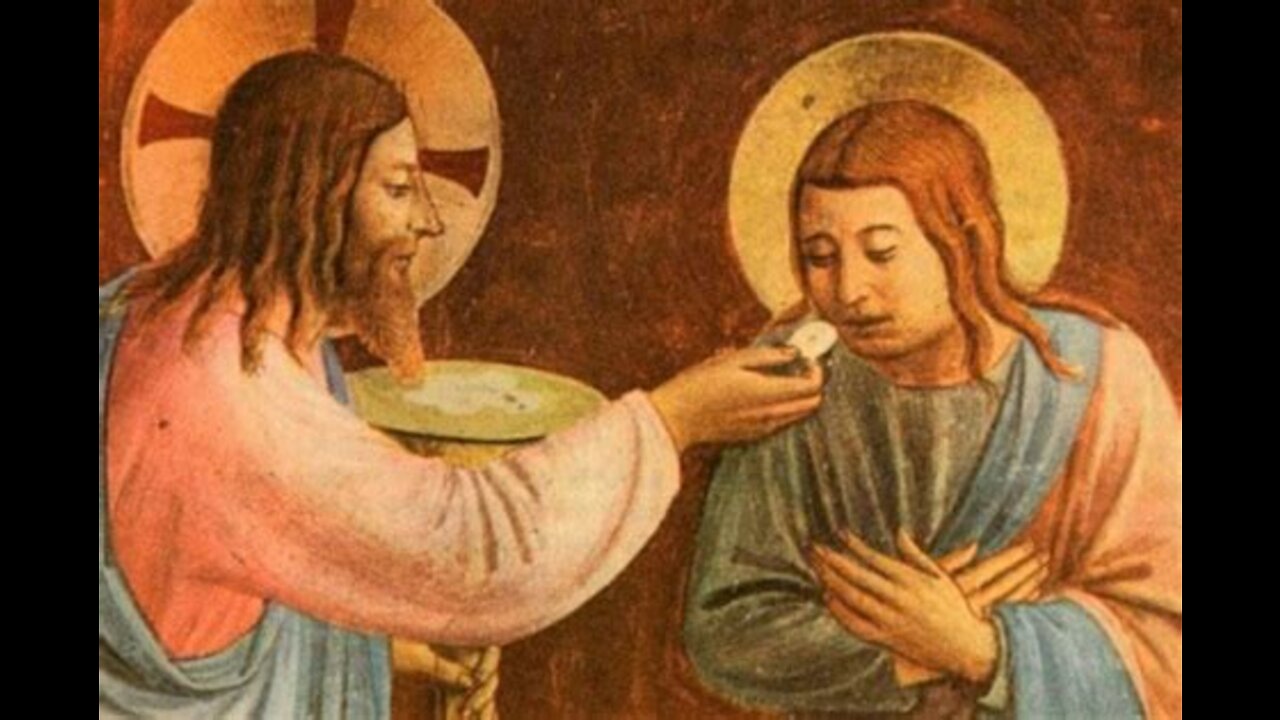
Eucharist II
V. Talmuds – Babylonian (200-500 AD) & Jerusalem (400 AD)
- trace back to time of Old Testament kings through reliable oral tradition
- nonbiblical sources used to give context and understanding, not inspired vs OT
- written before and during the time of Christ
- explains and supplement Moses’s Torah, written word and Temple ceremonial
VI Babylon Talmud, Tract Yomah describe in minute detail Temple worship of the Day of Atonement (Mass), Jesus & Apostles would have been very familiar with the ceremonies of both Passover and the Feast of Unleavened Bread
VII Jesus interwove the Passover and the Feast of Unleavened Bread. “The Passover celebrated the first night and the feast of unleavened bread held each night during the week we emblematic of the Church, the Messiah’s kingdom, and the Eucharist. Answer to title
VIII. On the Liturgy of the Last Supper they (apostles) founded new Rites- Liturgies of the Mass which were handed down by word of mouth till they were later written down. These were in the languages of the people.”
- The Apostles followed the lesson God gave the Jewish ceremonial and worship. Justin Martyr (Apology I) clearly shows detail of the Mass.
IX. While history is silent on the details of the Last Supper, the Jewish Rites of that epoch gives insight. “The Mass with its ceremonial comes directly from the Passover and indirectly from the Temple. Although we find Temple ceremonies in the Mass and in our Church ceremonial, yet we trace them directly to the Last Supper which Christ and his apostles held that night as the Hebrew Passover.”
X. An assertion: “The Liturgy of the Passover, formed of prayers, Psalms, chants, anthems, directions, rubrics, etc. were the foundations on which the apostles, apostolic men and great saints formed the 54 different liturgies of the Mass. The most famous, the Roman Rite, established by Peter in the Eternal City, and with little change, comes down to us under the name of the Latin or Roman Mass.”
XI. Original language of the Mass by St. Peter was Syro-Chaldaic written in Antioch
Summary of the forgoing work: When Peter went to Rome, he would have spoken and worshipped in the language the people worshipped, which was Latin. Rome being a seat of primary importance due to the martyrdoms of Peter & Paul as well as the hub of the ancient world, set a pattern copied by other new Christian communities.
Fortescue never left England. Meagher went to Holy Land, on site. Like Fauci giving medical advice haven’t seen patients in years. Meagher got evidence then wrote book. Fortesuce only scholarship. Not travel firsthand observation.
Part II Time frame Jesus 33 to 311 AD
I. Apostolic & Patristic Period, why stop at 311?
- Patristic period extends past Constantine includes Augustine, Athanasius, Chrysostom, and Basil to name but a few of the giants of the Faith. Without whom we would not the rich and articulate Faith we now possess.
- Pre-Constantine is a nod to our ancient roots. Some wrongly suggest that Constantine with Edit of Milan 311 mandated Christianity throughout the Roman Empire. Rather, Constantine stopped the active persecution of Christians by recognizing them. He himself converted at his death bed.
- Vigorous interest in some quarters of Evangelicals recognizing Communion and its efficacy as protection, cause of unity in the body, and a fresh consideration of the words of the Lord.
- The are special words i.e. elements (Protestant) for the wine and bread, as well as the sharing of Communion to those not present. Some of our separated brethren experiencing the salutations effects of Communion, advocate for being a daily communicant.
- I had the privilege of attending a Presbyterian seminary’s reception of the altar, their careful consideration of it, and the blessing of it by (Holy) Water with an asperum.
- Though I stop before the Edit of Milan, I think the words of St. Basil are particularly apropos. Basil mentions the unwritten traditions known to all, such as the sign of the cross, eastward prayer, and the words pronounced over the bread and wine: “As everyone knows, we are not content in the liturgy simply to recite the words recorded by St. Paul and the Gospels, but we add other words both before and after, words of great importance for this mystery. We have received these words from unwritten teaching.”
Modern scholars also have concerns Pre & Post Nicaea. Jungmann, as an example, has concerns about those traditions not written done as well as the further removed one is from the event the less credible it is. These presuppositions necessarily limit the sources considered.
I will start drawing from another scholar of the same period, Fr. Adrian Fortescue. He will round out in some ways the insights of Fr. Meagher. Fr. Fortescue also differs in his conclusions from Fr. Meagher. I set Fr. Fortescue insights within a broader consideration of Patristic scholarship at some points.
Who is Fr. Adrian Fortescue? (1874-1923) English priest, PhD. The level of his scholarship was so exceptional that he was awarded a triple doctorate, which was presented by Emperor Franz Joseph I of Austria. Professor of church history at St. Edmunds College, oldest Catholic School in England.
II. Sources Considered
New Testament (33-99)
Clement of Rome (97)
Didache (100) Syria
Ignatius of Antioch (100)
Justin Martyr (150)
Irenaeus of Lyons (175)
Tertullian (200’s)
Origen (200)
Cyprian of Carthage (250)
Basil (350) opening quote
Rationale Divinorum Officiorum by Guillaume Durandus, Volume Three: A Modern Translation of Book Four translated by Janet Gentles
Italian Scholar of Mass, Liturgy 13th century all the Rites were of apostolic origin.
https://www.amazon.com/Rationale-Divinorum-Officiorum-Guillaume-Durandus/dp/1913017087/ref=sr_1_1?crid=3Q968W0JCT6G0&keywords=guillaume+durandus+mass+book&qid=1646844455&sprefix=guillaume+durandus+mass+book%2Caps%2C88&sr=8-1
-
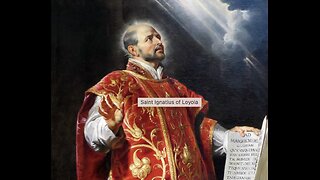 11:04
11:04
Fides et Ratio
9 months agoIgnatius’ Rules for Discernment Journey to God V
46 -
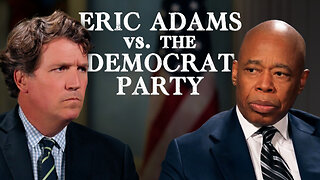 52:01
52:01
Tucker Carlson
14 hours agoNew York Mayor Eric Adams Sounds a Lot Like a Trump Voter
205K171 -
 2:47:25
2:47:25
Right Side Broadcasting Network
12 hours agoLIVE REPLAY: President Donald J. Trump Holds First Press Briefing Since Inauguration - 1/21/25
242K211 -
 1:08:45
1:08:45
Man in America
11 hours agoTrump UNLEASHED! Dismantling the Deep State and Restoring America
44.8K46 -
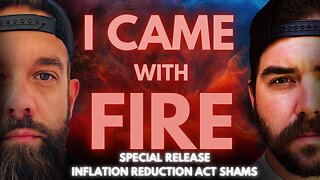 27:22
27:22
I_Came_With_Fire_Podcast
13 hours ago🔥SPECIAL RELEASE🔥 Inflation Reduction Act: American Seniors Get SLAMMED!!
47.7K10 -
 6:25:28
6:25:28
vivafrei
12 hours agoD.C. Gulag Jan. 6 Prisoners Release Watch!
221K111 -
 1:49:14
1:49:14
Redacted News
11 hours agoTrump is Back! Congress Uncovers New Biden Crimes One Day After He Leaves D.C. | Redacted
192K250 -
 2:09:53
2:09:53
Benny Johnson
11 hours ago🚨President Trump LIVE Right Now Making MASSIVE Announcement At White House News Conference
300K434 -
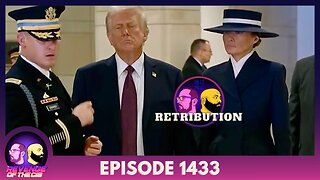 2:04:10
2:04:10
Revenge of the Cis
12 hours agoEpisode 1433: Retribution
131K21 -
 1:42:50
1:42:50
The Criminal Connection Podcast
15 hours ago $1.26 earnedEddie Hearn talks JOSHUA vs FURY, Working With Frank Warren & The Truth About Turki Alalshikh!
65.9K2